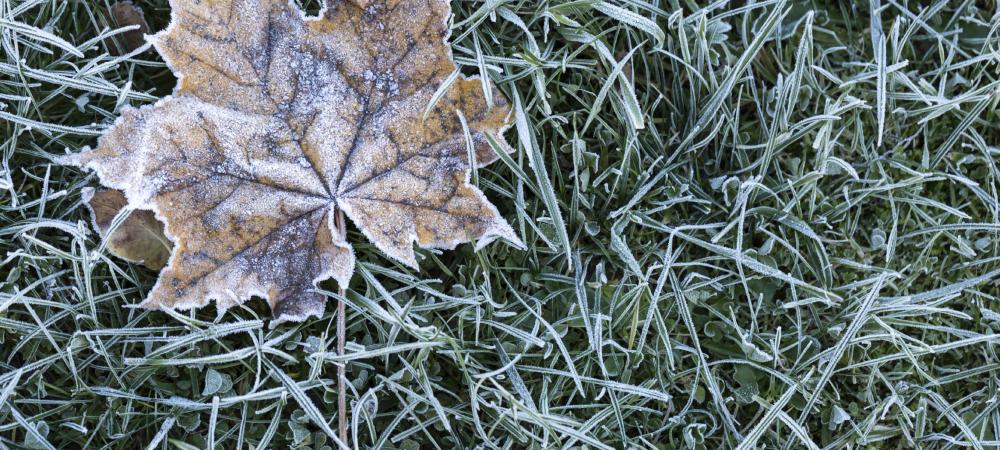10 Winter Lawn Care Tips for Texas Homeowners

Winter in Texas may not bring deep snow or freezing conditions like those in northern states, but it does bring cooler temperatures, shorter days, and drier air. These changes can affect your lawn's health and appearance. Whether your Texas lawn is made up of St. Augustine, Bermuda, Zoysia, or a mix of grasses, winter lawn care is essential to keep it thriving through the season and ready to flourish in spring. Here’s a guide on how to care for your Texas lawn this winter, including tips on mowing, watering, weed control, and more.
1. Identify Your Grass Type
Texas lawns are typically a mix of warm-season grasses (Bermuda, St. Augustine, Zoysia) and cool-season grasses (Fescue, Rye). Each grass type has different requirements during winter.
- Warm-Season Grasses: Expect them to go dormant, turning brown. They need minimal care in winter, mainly just protection and weed control.
- Cool-Season Grasses: These grasses stay green and may need light fertilization and continued watering.
Tip: If you’re unsure of your grass type, take a photo to your local garden center or get an inspection by a local lawn technician.
2. Gradually Reduce Mowing
While growth slows significantly in winter, some mowing is still necessary, especially for cool-season grasses.
- Start reducing your mowing frequency in late fall, but don’t stop mowing completely until your grass enters dormancy. For most parts of Texas, this means mowing every two to three weeks in November and possibly into early December.
- Follow this rule of thumb—for warm-season grass, mow once every 3–4 weeks. For cool-season grass, you may need to mow every 2–3 weeks.
- Maintain a grass height of about 2-3 inches for Bermuda and Zoysia grasses, while St. Augustine lawns do best at around 3-4 inches. This height protects the roots from cold snaps and keeps your lawn healthy.But a general rule of thim
- Dull blades can tear the grass, leading to disease. Sharpen blades at the start of winter to avoid damaging your lawn.
Tip: Only mow when grass is completely dry to prevent clumping and mower damage.
3. Consider a Pre-Winter Fertilizer Application
In Texas, a final fertilizer application in late fall can provide your lawn with essential nutrients to sustain it through winter. This application should be rich in potassium, which strengthens roots and helps grass retain moisture during colder, drier months. Avoid high-nitrogen fertilizers in the winter, as these can stimulate new growth that will be vulnerable to freezing temperatures.
- Warm-Season Grasses: Apply a potassium-rich fertilizer in late fall or early winter. This strengthens the grass’s roots and enhances cold tolerance.
- Cool-Season Grasses: Apply a balanced, low-nitrogen fertilizer or a thin layer of compost if your lawn needs a nutrient boost in mid-winter.
Look for a “winterizer” fertilizer designed for Texas lawns or consult with a lawn care specialist for the right blend.
4. Adjust Your Watering Schedule
Winter in Texas can be drier, but lawns still need moisture to stay healthy. Modify your watering schedule based on local rainfall:
- Water Every 2-4 Weeks: This varies depending on how much rain you receive. If your area gets less than one inch of rain over two weeks, it’s time to water.
- Water in the Morning: This gives moisture time to absorb before temperatures drop at night, helping prevent fungal issues.
- Avoid Watering Before Freezes: Watering just before a freeze can damage grass blades, so check weather forecasts beforehand.
Pro Tip: If your area gets less than one inch of rain over two weeks, it’s time to water.
5. Watch for Weeds
Texas lawns are prone to winter weeds like chickweed, henbit, and annual bluegrass, which thrive when other grasses go dormant.
- Applying a pre-emergent herbicide in late fall or early winter can help prevent these weeds from germinating and taking over your lawn. Be sure the product is suitable for your grass type
- Follow up with a post-emergent treatment if any weeds do appear, but avoid chemical treatments if a freeze is forecasted within 48 hours, as this could damage your grass.
Note: Cool-season grasses may not tolerate herbicides well, so avoid treatments on them if possible. Consider investing in professional weed control to keep your lawn weed-free year-round.
6. Rake Leaves Regularly
While Texas trees may not drop as many leaves as those in northern climates, it’s still important to keep your lawn free of heavy leaf layers. Leaves that sit too long can block sunlight and trap moisture, leading to fungal growth and yellowing of your lawn. Rake leaves as they fall, or use a mulching mower to chop them up, which can also provide your lawn with extra nutrients.
7. Aerate If Necessary
If you haven’t aerated your lawn in the fall, consider doing it before winter dormancy fully sets in. Aerating helps reduce soil compaction, especially in areas of Texas where the soil is heavy clay. This allows water and nutrients to penetrate deeper into the root zone, helping your lawn stay healthier during winter. Aeration improves soil structure, allowing better absorption of nutrients and moisture.
You can rent an aerator or hire a professional lawn aeration service for this task.
8. Limit Heavy Foot Traffic
Once your lawn goes dormant, it becomes more sensitive to heavy foot traffic.
- Avoid parking vehicles on your grass, and try to limit high-traffic activities in your yard.
- Try to walk on pathways or use temporary outdoor mats to prevent wear and tear on the lawn.
- If there are high-traffic areas on your lawn, lay down stepping stones in certain areas to protect the grass.
Dormant grass doesn’t recover quickly from damage, and excessive wear can lead to bare spots that are harder to fill in when spring arrives.
9. Prevent Disease with Proper Lawn Hygiene
Fungal diseases, like brown patch, can still develop during mild Texas winters. Rake up leaves, remove fallen twigs, and keep your lawn free from debris to reduce disease risks. Avoid watering in the evening, as moisture that lingers overnight can encourage fungus. If you notice signs of disease, treat affected areas promptly with a fungicide or consult a lawn care specialist for the best solution.
Learn what common problems could affect your TX in Fall or Winter.
10. Protect Young or Delicate Plants
While Texas winters are mild, sudden cold snaps can still harm tender plants and flowers, especially in regions that occasionally dip below freezing. Young or delicate plants, including tropical varieties or recent transplants, are particularly vulnerable. Here are a few ways to protect them:
- Use Frost Cloths: Cover delicate plants with lightweight cloths or burlap to shield them from frost.
- Apply Mulch: Add a layer of mulch around the base of sensitive plants to retain warmth, keeping it a couple of inches away from the stem to prevent rot.
- Move Potted Plants: If possible, bring sensitive potted plants indoors or move them to a sheltered area.
Prepare for a Strong Spring Start
To make the most of winter’s end and help your lawn thrive as spring approaches, consider the following steps:
- Conduct a Soil Test: This will help determine specific nutrients your soil may need for the new growth season. Many Texas counties offer soil testing services through local extension offices, including Texas A&M AgriLife Extension.
- Plan for Overseeding: If your lawn has thin or bare spots, overseed in late winter or early spring to enhance turf density, especially for warm-season grasses. Lightly rake or aerate to improve soil-seed contact and water lightly until germination.
Conclusion
Winter lawn care in Texas is less demanding than the peak growing season, but these small adjustments make a big difference. Tailoring your care routine to Texas’s climate will allow your lawn to rest, resist winter weeds, and emerge lush and green in spring. By understanding your grass type, adjusting mowing and watering, and implementing some strategic treatments, you’ll set your lawn up for a vibrant, healthy start to the year ahead.
